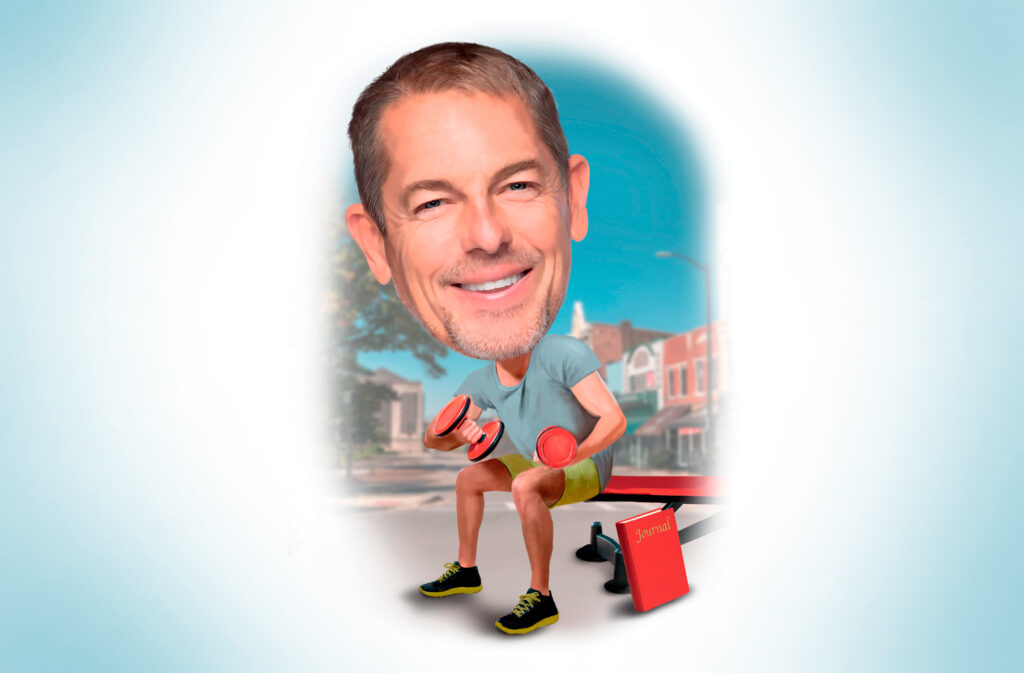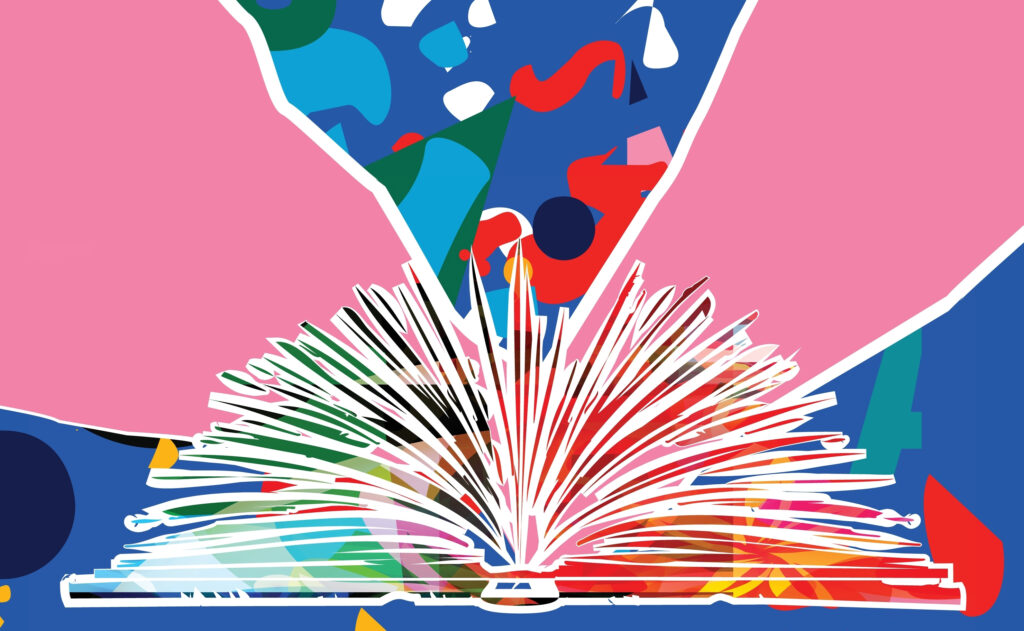
Ode to the Arts

It may be the way I was raised in small-town southwestern Pennsylvania, among the Amish and Mennonites, or maybe it was the 1960s and ’70s-era thinking, but I was told to work hard at a task that resulted in a product with a clear market value to earn a living as the path to success.
Sweat, elbow grease and a bit of luck and I’d have a house, two cars and an antenna on the roof for the television. With the exception of a few fluffy-collared dilettantes, which everyone gossiped about as frittering away their lives on artistic pursuits, that’s what people did.
Your Brain on Art: How the Arts Transform Us
By Susan Magsamen and Ivy Ross
Random House
$30
Susan Magsamen and Ivy Ross offer a different perspective in Your Brain on Art. “In short, the arts and aesthetics change us and, as a result, they can transform our lives,” they write. Art is the language of humanity, they suggest, enriching and leading us beyond the black ink of a memo, the pixels of a desktop spreadsheet, or a return-on-investment analysis. It lifts us to a higher level of curiosity, openness to exploration, and elevated sensory awareness while transporting us from the soul-draining repetition of repetitive tasks into a cool, refreshing, mindspring-fed lake of possibilities.
Magsamen is the founder and director of the International Arts + Mind Lab, Center for Applied Neuroaesthetics at John Hopkins School of Medicine, where she is also a faculty member. Ross is the vice president of design for hardware product at Google and a National Endowment for the Arts grant recipient. Both Magsamen and Ross work to bring the arts into health, education, workforce innovation, and process improvement.
The authors expound on the concept of neuroaesthetics, a recently developed area of science combining psychological research with the creation of art. Their definition of art and aesthetics is broad, including not only painting, music and dance but also any activity stimulating the brain to think in expanded and fresh ways, such as gardening, spending time in nature, smelling, tasting, reading, touching and reimagining our physical surroundings. “A single sniff of a certain perfume or cologne can bring you back to a long-forgotten relationship,” the authors relate. “Several chemicals released when grass gets cut stimulate the amygdala and the hippocampus, helping to reduce stress by lowering cortisol.”
Aesthetic trigger points in the brain may release emotions and memories and spur physical reactions, all stimulating potentially creative insights and redirecting our energy into fresh ideas, motivating us to think from a new angle. There is tremendous applicability in business when systems or profits are jammed up.
How the Beatles Saved Starbucks
The authors recount a situation in 2008 when “Starbucks was in trouble.” Leadership had a problem trusting one another. Brand loyalty was on the decline as were profits. The executives of Starbucks were brought to “a beat-up loft in downtown Seattle” rather than a corporate boardroom or an offsite retreat at a conference center. They were taken out of their known environment and challenged within an unlikely setting. Next, they were given headsets and told to listen to every song the Beatles recorded. Beatles posters and paraphernalia filled the room.
After listening, the executives were asked, “What made the Beatles iconic?” Dialogue and stories flowed among executives who had been tight-lipped and mistrustful. The next question brought forth tears and emotions. “If Starbucks were a cultural icon, what would you hope for in its reinvention?” At this three-day retreat, the leaders rewrote their mission statement from scratch as well as a multi-stanza poem about the company they wanted to reinvigorate. This is an example of the arts and the aesthetics of an unconventional environment bringing forth creativity to refocus a company in new and fresh ways.
I’m not a Beatles fan, but I’ve intentionally placed a framed poster of the jazz trumpeter Al Hirt where I see it every morning. He inscribed it to me after a performance in his New Orleans Bourbon Street nightclub. A classically trained musician, he excelled in the arena of improvised jazz, using his formal education at the Conservatory of Music in Cincinnati as a foundation to riff into several best-selling recordings. I’m back in that smoky, packed club every time I pass the poster, seeing him again standing center stage in full command, inside of and experiencing his notes through associative memory, reminding me of the role that creativity should play in my occupation and personal life. Much like the reset that the Starbucks executives experienced, I have my touchstone every morning, briefly, before I open the back door. Unknowingly, I was following a principle outlined in Your Brain on Art.

Health and Community
There is also applicability for the arts in improving health. “During a dance class, in a brightly lit studio, people with PD [Parkinson’s disease] dance the hula and the tango. They fox-trot and do the box step. And as they do, their tremors subside.” Magsamen and Ross explain that “it is a biological reality based in neurochemistry: Dance marshals multiple parts of the brain, including the basal ganglia, the cerebellum, and the motor cortex.” Over time, participants’ gait improved, and there were reductions in tremors.
Another art form, storytelling, is shown to have been instrumental in the building blocks of community throughout human history. “Storytelling triggers strong neural reactions in our brain that make us connect to the ideas being communicated, and to the person speaking,” note the authors. In an interview, evolutionary biologist Edward O. Wilson explains that connecting and sharing through experiences goes back to the discovery of fire and evening fire circles. “At night, though, something remarkable happened. Fires were built, wood crackled into flame, and woodsmoke, heady and fragrant, filled the air.” Around the fire, eons ago, creative expression developed as an “important layer of meaning-making,” giving context to the day and creating societal norms. “It is in this very place,” the authors continue, “that the activities we now call ‘the arts’ began to take shape as an evolutionary priority to keep us alive…laying the basic foundation for culture and community.” Storytelling humanizes a concept or idea, socializing it with a heartbeat, and spins a shared thread among listeners. The art of storytelling can humanize a sales process, bring a work team closer, or act as a catalyst to bring a family together during a difficult time.
Our lives and work environments are barreling through a rapid pace of change, disruption and disturbance—a pandemic, political unrest, war and the upending of how we work with the spread of automation, artificial intelligence, and offshore processing. “Many adults relegate art and the making of it to those they deem professional artists,” note the authors, overlooking the value in our lives and work. Quoting Keith Yamashita, the authors advance the value of art in our automated, artificial intelligence, and wired existence: “I believe we are at the very end of the efficiency movement in business. We can’t get any more lean or efficient. We need to live as embodied humans, not just as cerebral beings. This means embracing all the senses and artistry and art of a life.”
Magsamen and Ross effectively and interestingly drive home their broad assertion that creative expression, the arts, and a curiosity and awareness of our aesthetic surroundings add a vibrancy and connectedness to underutilized regions of the brain. Arts empower. Arts allow us to re-envision. The arts connect us with other ways of seeing and experiencing the world. It is a pathway to imagining original ideas and solutions. Approach Your Brain on Art: How the Arts Transform Us as relief from the growing banality of the hyper-wired 21st century and as a canvas to the Picasso within us.




